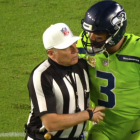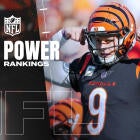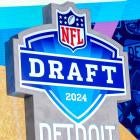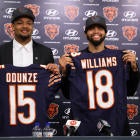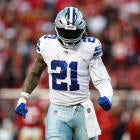A study published by Boston University on Thursday found that repeated hits to the head -- not concussions -- can lead to CTE, a disease that has plagued NFL players after their departure from the league. The new research says that even at younger levels, football can be dangerous -- not just at the fast-paced pace of play that college and the NFL have.
The study, which was published in the journal Brain, examined the brains of four teenage boys, and the brains of mice that showed changes after trauma, in spite of not showing symptoms of concussions. Boston University led the study, and Cleveland Clinic, Lawrence Livermore National Laboratory and VA Boston Healthcare System scientists all contributed. The study was led to answer the question of why about 20 percent of brains that were found to have CTE were from subjects that had never had (or at least been diagnosed with) concussions.
"There are going to be policy implications to this," co-author of the study Lee E. Goldstein said, via USA Today. "This is concerning, particularly for kids who are not old enough to make other decisions legally on their own -- like to smoke, drink or drive a car. Just like we don't allow kids to do those activities, I think we have a moral obligation to protect them from harm."
Goldstein also said that protections from brain trauma have been limited. The NFL's controversial concussion protocols have been largely ineffective to this point, and that the problem extends past football.
"We know now there is no question that some of these kids, some of these adults, who are playing through hits are actually in really bad shape," he said.
Ann McKee, the director of Boston's CTE Center, said that prevention is the only way to handle the risk of CTE.
"There must be a reduction in the number of head impacts," she said in a statement. "The continued focus on concussion and symptomatic recovery does not address the fundamental danger these activities pose to human health."
The subjects of the study were all deceased: An 18-year-old football, baseball and basketball player; an 18-year-old football, rugby, soccer and in-line hockey player; a 17-year-old football and lacrosse player; and a 17-year-old football player. All subjects were male.
As the NFL continues to deal with its concussion problem, this adds another wrinkle that the league must think about.













